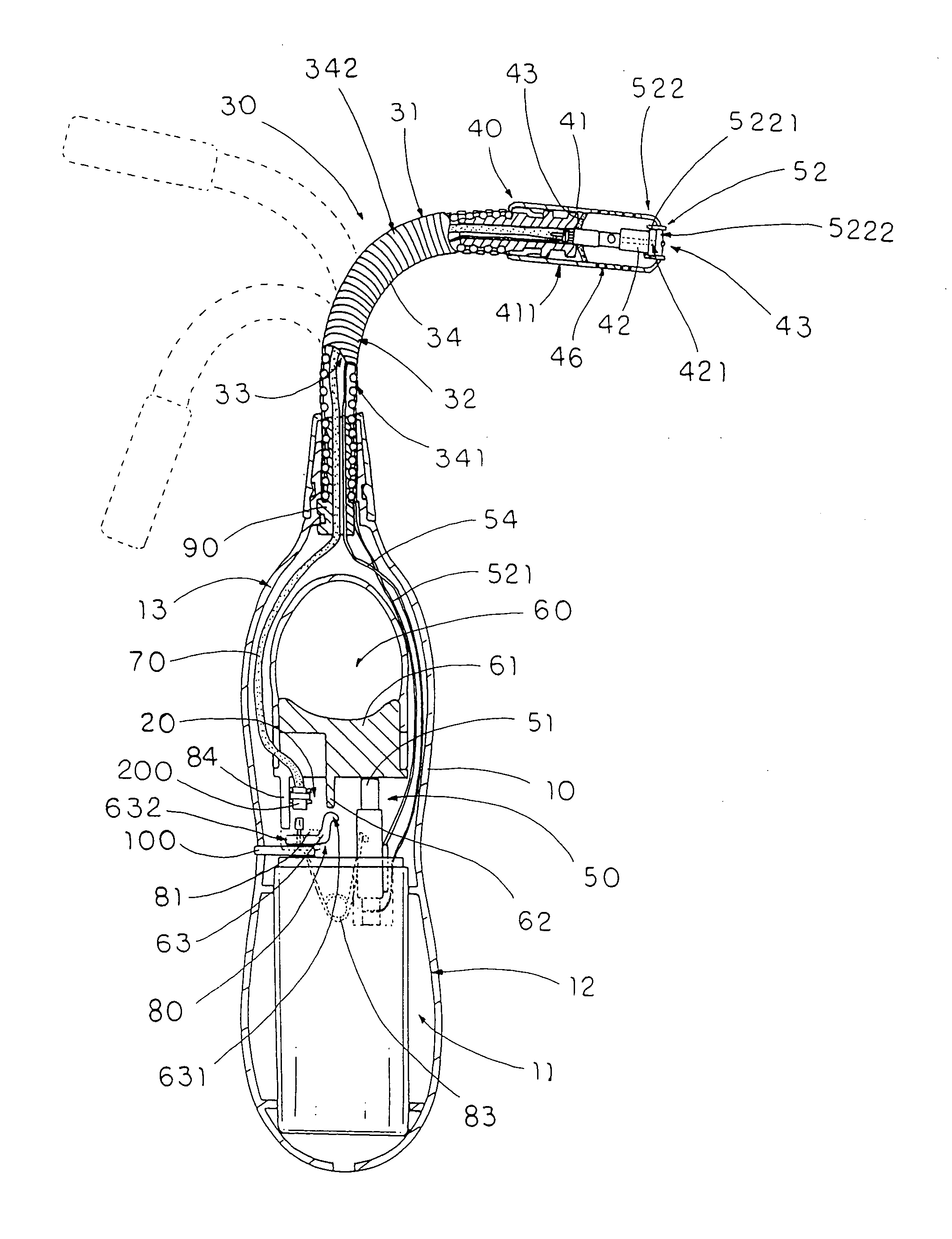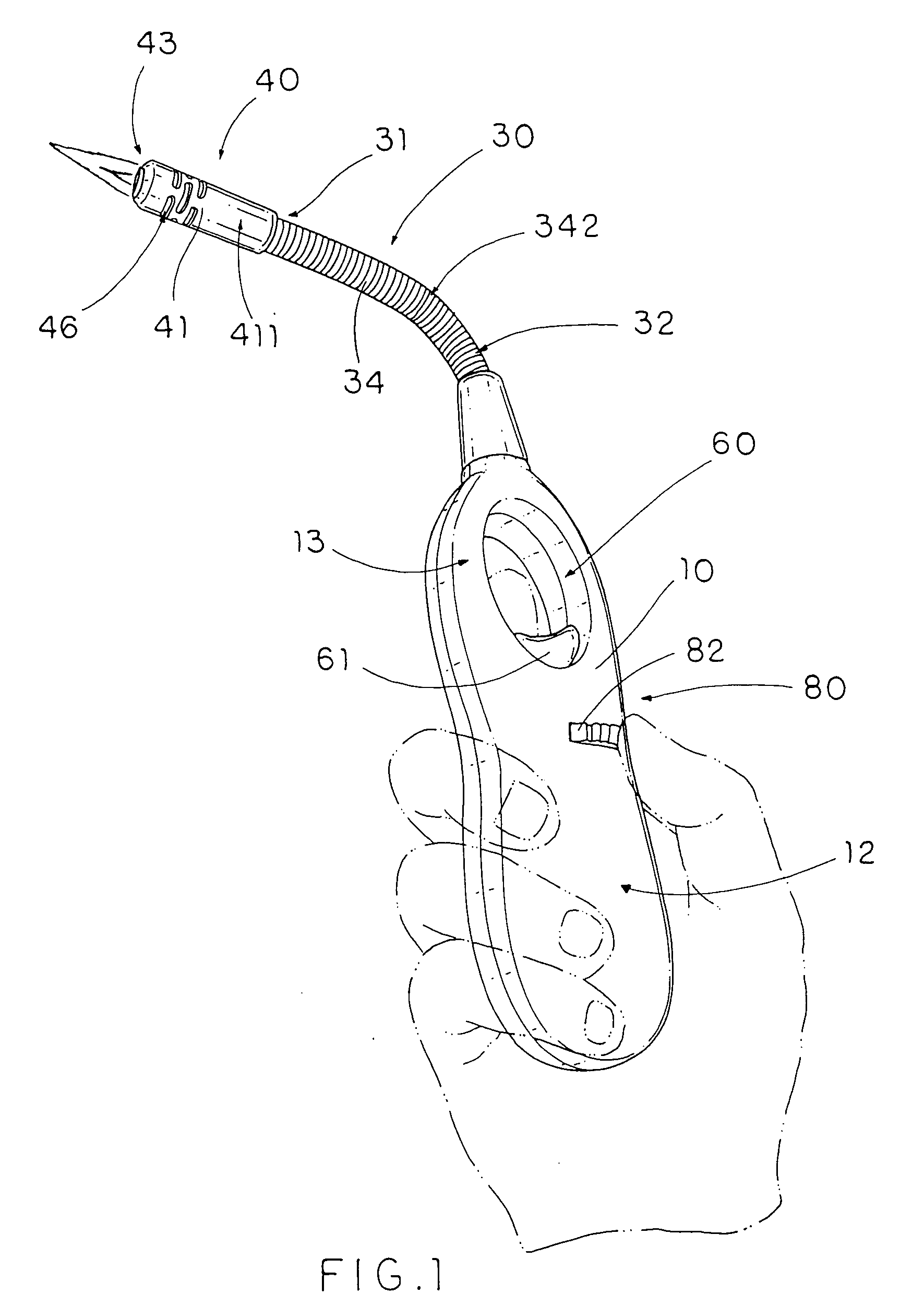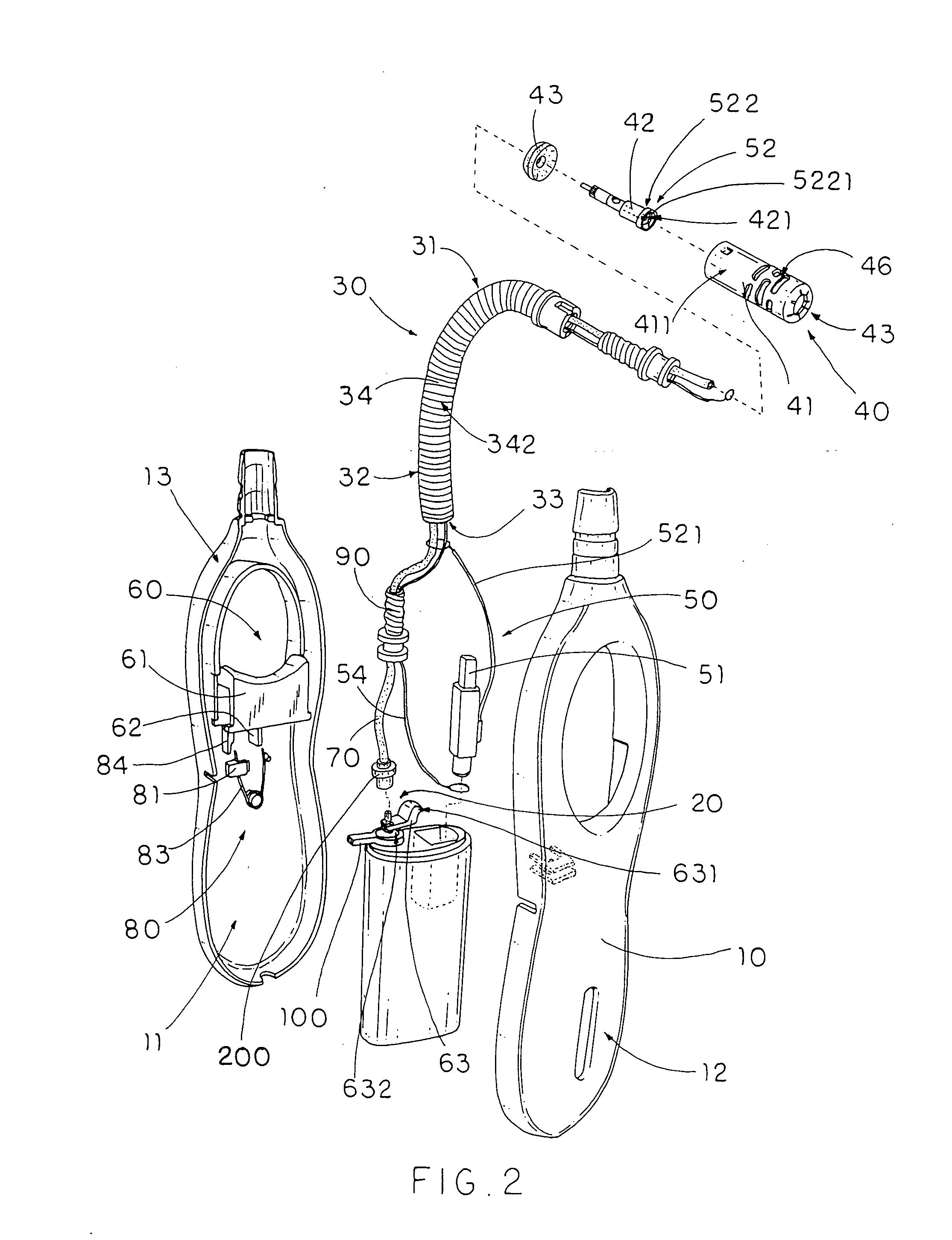Utility lighter
a technology of utility lighters and lighters, applied in the field of utility lighters, can solve the problems of inconvenience for the flame of the conventional utility lighter is vulnerable to wind, and the inconvenience of the user of the conventional utility lighter
- Summary
- Abstract
- Description
- Claims
- Application Information
AI Technical Summary
Benefits of technology
Problems solved by technology
Method used
Image
Examples
Embodiment Construction
[0030]Referring to FIG. 1 to FIG. 4 of the drawings, a utility lighter, such as a barbecue lighter, according to a preferred embodiment of the present invention is illustrated, in which the utility lighter comprises a handle casing 10, a gas releasing valve 20, a bendable extension arm 30, a torch nozzle 40, a piezoelectric unit 50, and an actuation device 60. The handle casing 10 has a fuel storage compartment 11 formed therein for storing a predetermined amount of liquefied gas. The gas releasing valve 20 is provided at the fuel storage compartment 11 for releasing the gas therein in a controllable manner when the gas releasing valve 20 is uplifted.
[0031]The bendable extension arm 30 has an upper end 31 and a lower end 32 extended from the handle casing 10, wherein the bendable extension arm 30 has a deformable receiving channel 33 which is extended from the lower end 32 to the upper end 31 and is adapted to be curved when the extension arm 30 is selectively bent between the upper...
PUM
 Login to View More
Login to View More Abstract
Description
Claims
Application Information
 Login to View More
Login to View More - R&D
- Intellectual Property
- Life Sciences
- Materials
- Tech Scout
- Unparalleled Data Quality
- Higher Quality Content
- 60% Fewer Hallucinations
Browse by: Latest US Patents, China's latest patents, Technical Efficacy Thesaurus, Application Domain, Technology Topic, Popular Technical Reports.
© 2025 PatSnap. All rights reserved.Legal|Privacy policy|Modern Slavery Act Transparency Statement|Sitemap|About US| Contact US: help@patsnap.com



